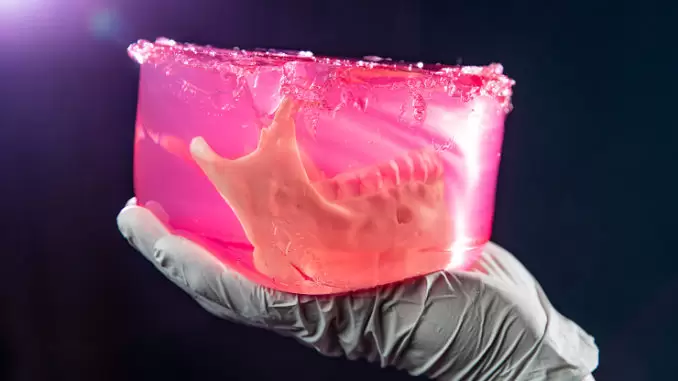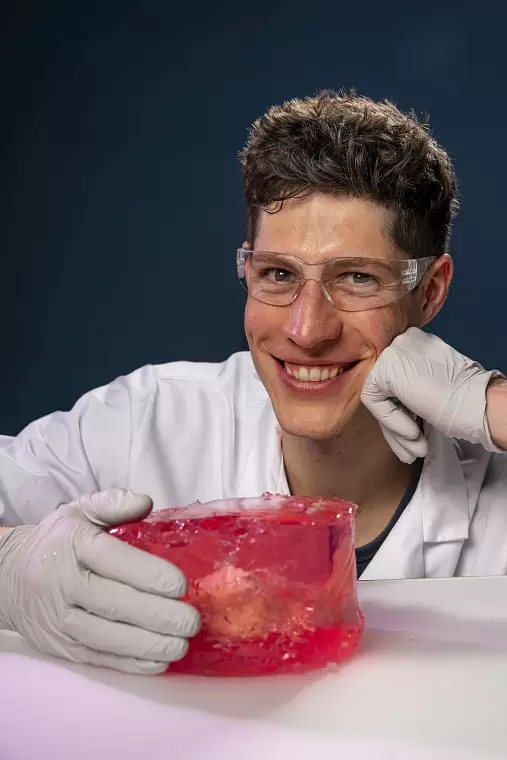
Views: 67
Courtesy UiO – By Astrid Skiftesvik Bjørkeng : Aging is a privilege, but with increasing age, the risk of getting sick also increases. In the oral cavity there are diseases that attack the bones and tissues around the teeth and implants, the so-called periodontal and peri-implant diseases, which can become a problem when you get older.
The consequence of these diseases may be that the bone to which the tooth is attached disappears and the tooth falls or the tissue around the implant becomes so inflamed that the implant should be replaced.
New materials and methods

To compensate for the devastating consequences of these diseases, new materials and methods must be found to facilitate bone formation. In a recently published doctoral dissertation, Manuel Schweikle, a researcher at the School of Dentistry, researched a gel that has the potential to become a new treatment alternative for these diseases.
Bone-like environment
Schweikle found that a water-based gel, the so-called hydrogel containing amorphous calcium phosphate minerals, creates an environment similar to that of natural bone.
– When this particular hydrogel was placed in the broken part of the bone, the bone cells of the surrounding tissue will migrate, he explains.
The bone cells will start a process of degradation of the gel and the minerals it contains and begin to produce new bones.
The reason the bone is formed more rapidly in this particular gel lies in the amorphous structure of these minerals.
“An amorphous structure,” he explains, “means that the structure at the atomic level does not have a regular structure. This makes it easier for bone cells to break down the amorphous calcium phosphate minerals and regroup them into bone minerals. Simply creating new bones.
Many different methods
“It was important to examine the effect of the hydrogel on bone cells,” says Schweikle, and many different methods were used to describe the mechanical, structural, chemical, and biological properties of the hydrogel.
The dissertation also explored how the hydrogel can be made and demonstrated how bone cells develop in this bone-like material. One clear finding was a new, more effective bone formation.
A possible treatment option
“In a society with a growing number of older people, the extent of periodontal disease will increase and with this research we outline a possible treatment option,” explains Schweikle. “This is a treatment that is both simple and not less effective, and which also has the potential to be economically beneficial, and save the individual patient for unnecessary suffering because the treatment is so gentle,” concludes Schweikle.
references:
- Schweikle, Manuel; Bjørnøy, Sindre Hove; Van Helvoort, Antonius; Haugen, Håvard Jostein; Sikorski, Pawel & Tiainen, Hanna (2019). Stabilisation of amorphous calcium phosphate in polyethylene glycol hydrogels. Acta Biomaterialia. ISSN 1742-7061. . doi: https://doi.org/10.1016/j.actbio.2019.03.044
- Chahal, Aman Singh; Schweikle, Manuel; Heyward, Catherine Anne & Tiainen, Hanna (2018). Attachment and spatial organisation of human mesenchymal stem cells on poly(ethylene glycol) hydrogels. Journal of The Mechanical Behavior of Biomedical Materials. ISSN 1751-6161. 84, s 46- 53 . doi: 10.1016/j.jmbbm.2018.04.025
- Schweikle, Manuel; Zinn, Thomas; Lund, Reidar & Tiainen, Hanna (2018). Injectable synthetic hydrogel for bone regeneration: Physicochemical characterisation of a high and a low pH gelling system. Materials Science and Engineering C: Materials for Biological Applications. ISSN 0928-4931. 90, s 67- 76 . doi: 10.1016/j.msec.2018.04.049 Fulltekst i vitenarkiv.
Related article: iPS cells Heart muscle transplant in Japan
Leave a Reply